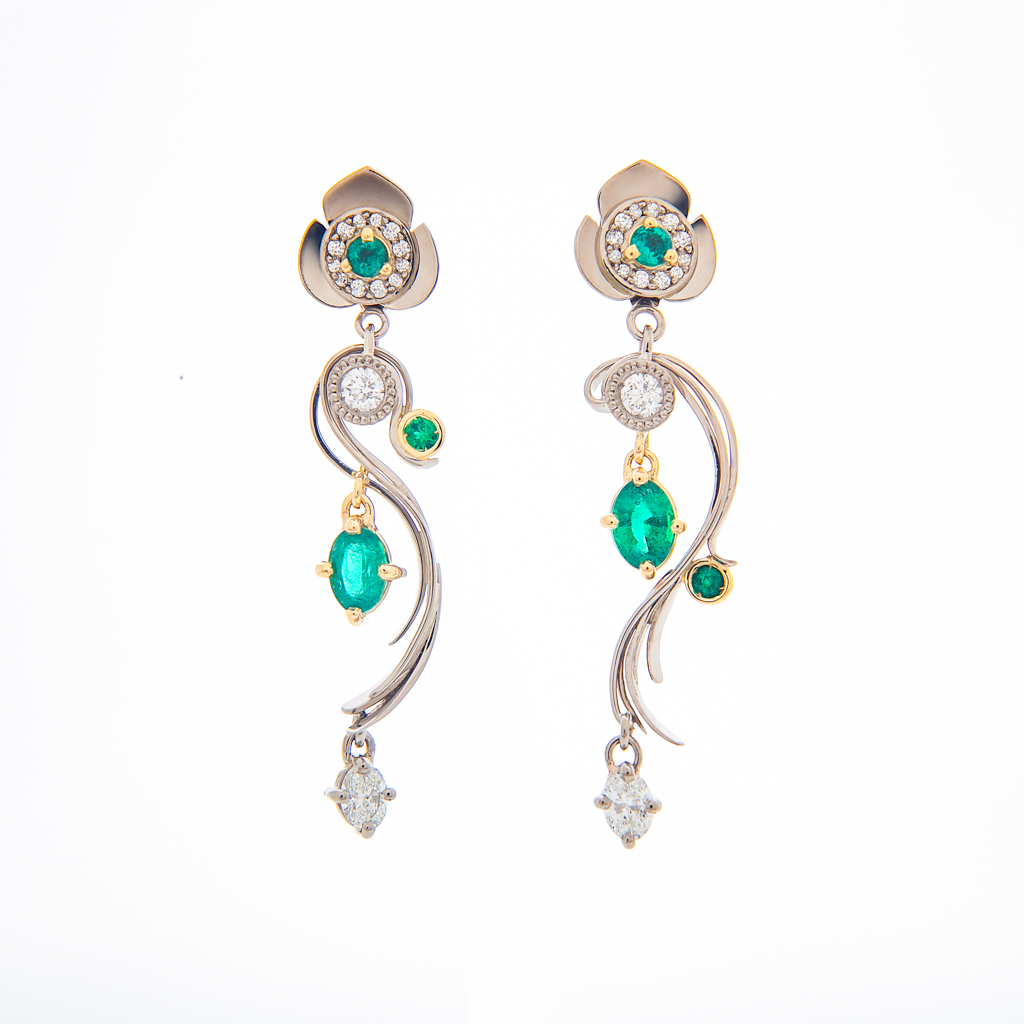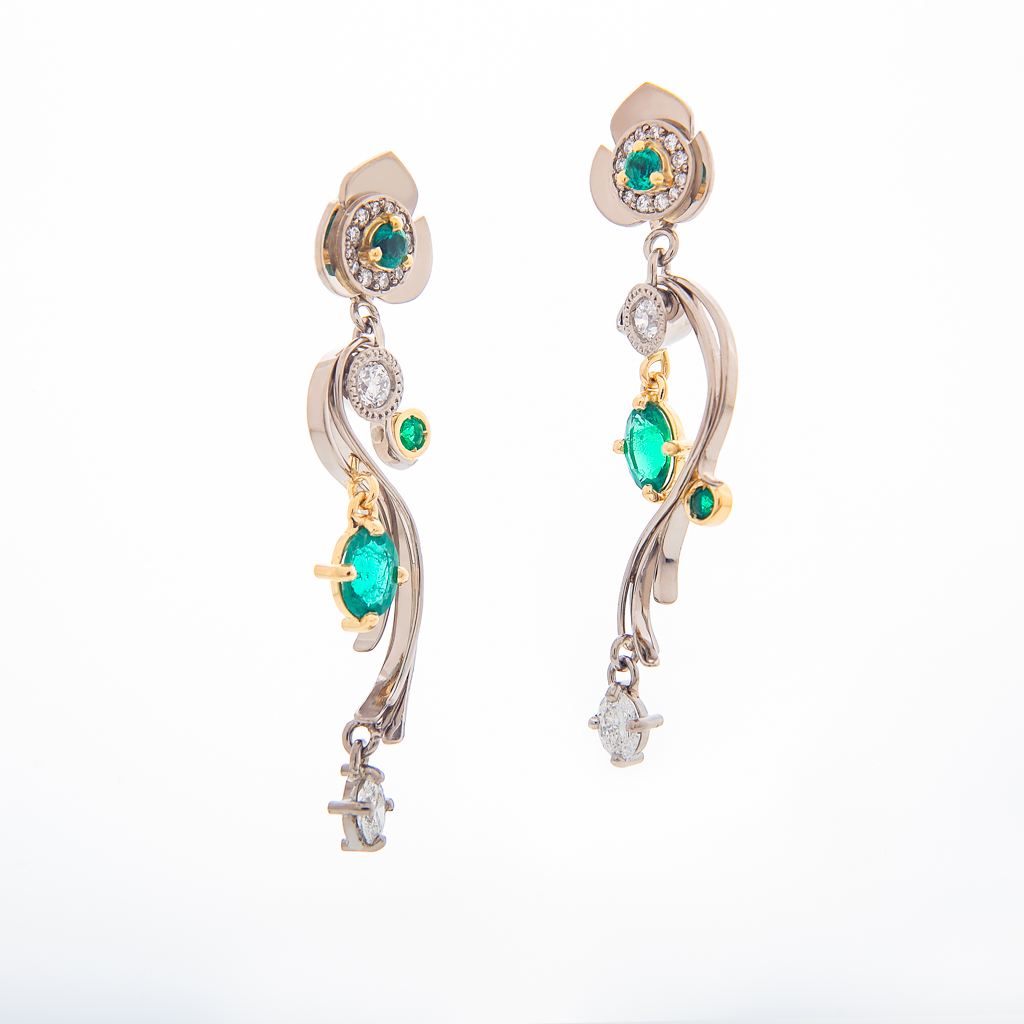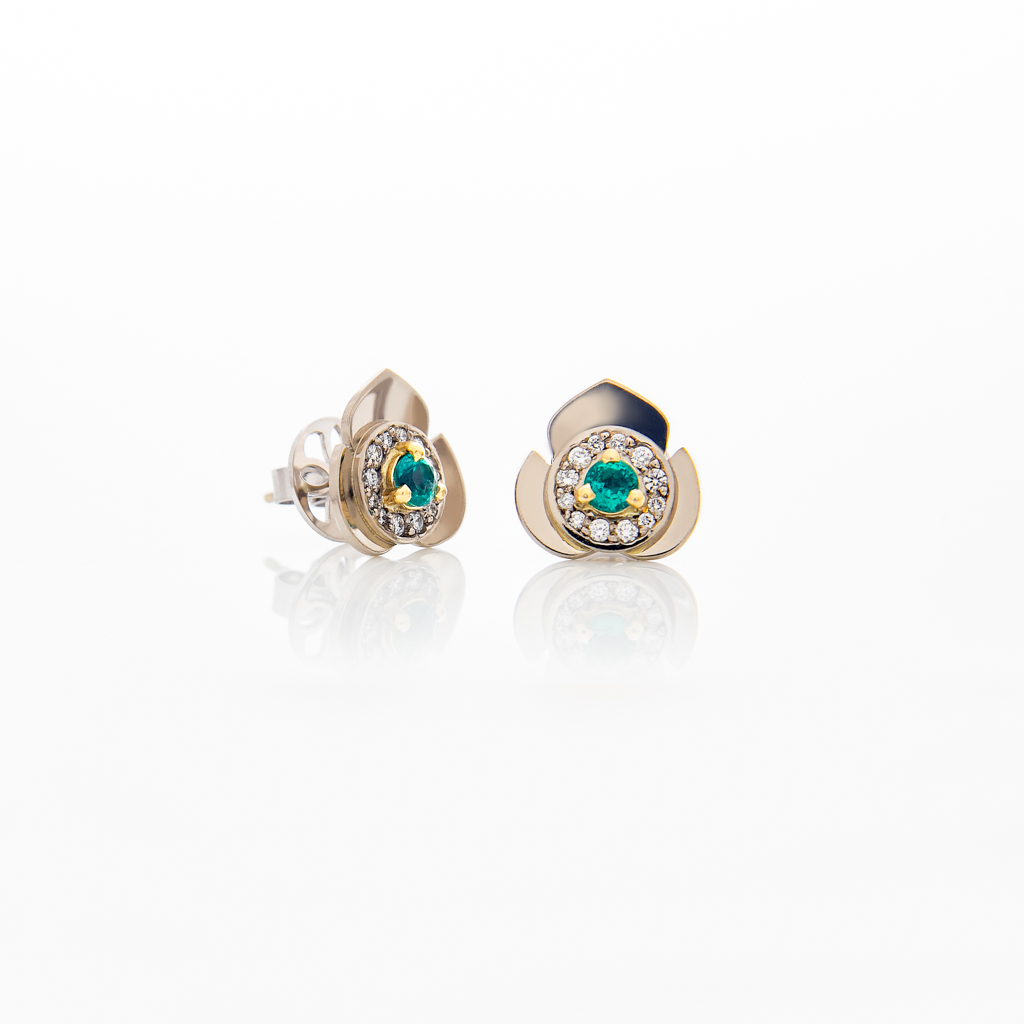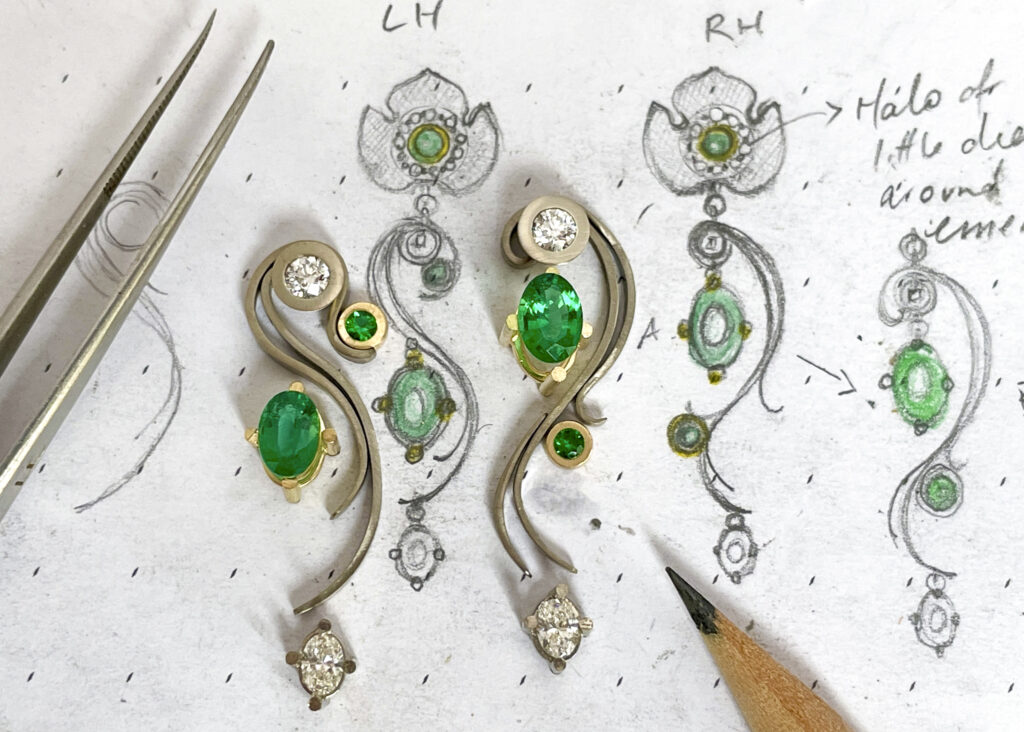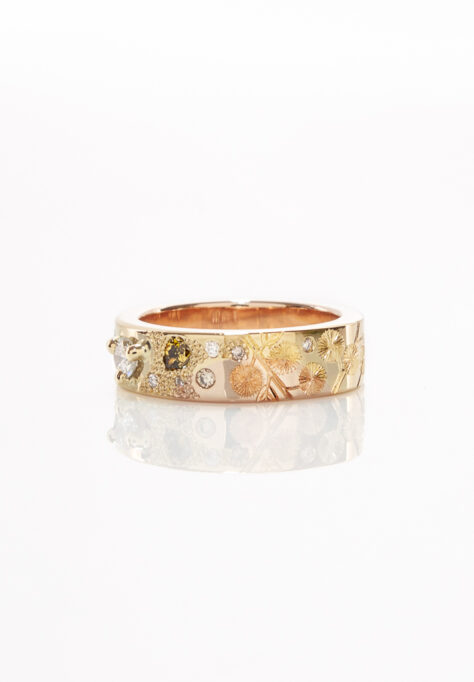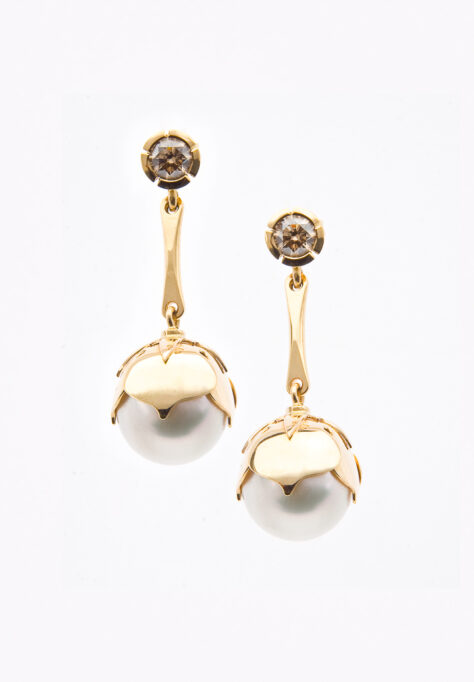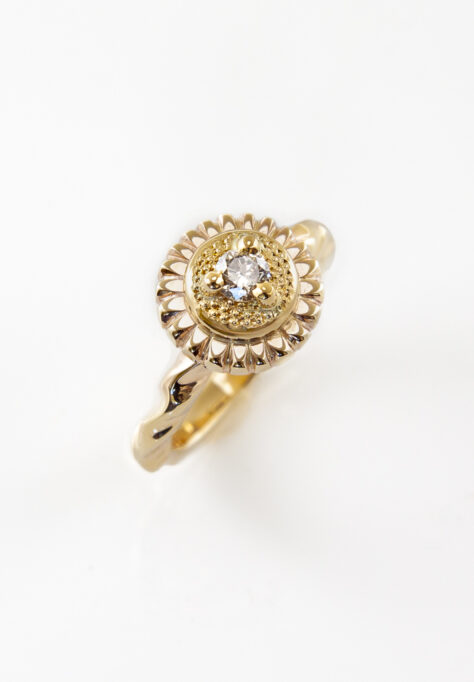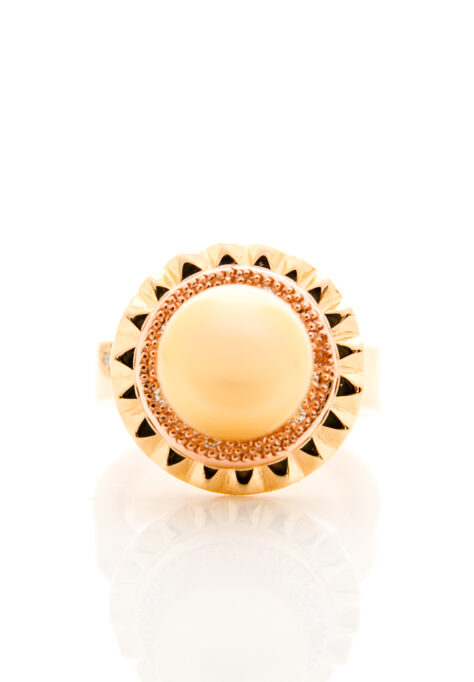Emerald and Diamond Grape Vine Earrings
Materials
18ct white and yellow gold
All natural gemstones including:
Emeralds and white diamonds
All works were previously commissioned and not available for purchase, though they may serve as inspiration for a new design.
View our price guide or contact us for pricing and commission enquiries.
Specially crafted as a gift for his lovely wife, who has a deep passion for exploring the origins and science of wine.
“We thoroughly enjoyed our collaboration with Camilla to produce a pair of emerald and diamond earrings. The creative process was engaging and through multiple iterations we came to the final design collegially.
It goes without saying that Camilla is extremely skilled at her craft, but she is also so approachable and personable that it makes the entire experience a real bliss. Thank you Camilla.”
– Sebastien
Emerald and Diamond Grape Vine Earrings
The emerald and diamond leaves can be detached and worn as stud earrings, making them perfect for everyday wear.
